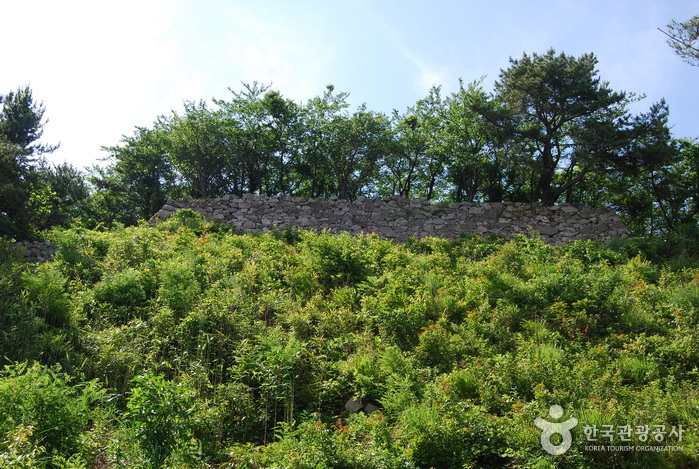Welcome to Seosaengpo Waeseong Fortress
Welcome to Seosaengpo Waeseong Fortress, a historic gem nestled in the beautiful region of South Korea. This stone fortress, also known as Seosaengpo Japanese Fortress, holds a significant place in history as a symbol of the Japanese invasion during the Imjinwaeran War in the late 16th century. Let me guide you through the fascinating history, architecture, and natural beauty of this magnificent tourist destination.
A Glimpse into History
Built under the leadership of Japanese General Kato Kiyomasa in 1592-1593, Seosaengpo Waeseong Fortress stands as a testament to the conflicts and negotiations that took place during the war. It is composed of three main fortresses strategically located on the mountainside, offering a commanding panoramic view of the surrounding landscape.
The main fortress sits atop the mountain, 200 meters above sea level, while the second fortress is halfway down the mountain. At the bottom, you’ll find the third fortress, completing the rectangular shape of the entire fortress. The fortress walls, standing at an impressive 6 meters high, are built at a slanting angle of 15 degrees, showcasing the architectural prowess of that era.
A Peaceful Monk’s Quest
During the war, a Buddhist monk named Samyeong-daesa made four attempts to negotiate peace at Seosaengpo Waeseong Fortress. Despite his efforts, the negotiations were unsuccessful. It was only in 1598, with the assistance of General Magwi of the Ming dynasty, that Korea was able to reclaim the fortress from the Japanese forces. As a tribute to the brave Koreans who lost their lives in the battles, Changpyodang Shrine was erected. Although the shrine was destroyed during the Japanese imperialism period, the significance of their sacrifice remains forever etched in history.
Exploring Seosaengpo Waeseong Fortress
As you embark on your journey to Seosaengpo Waeseong Fortress, you may choose to take a bus from Seoul Express Terminal to Ulsan Bus Terminal. From there, simply cross the street to find Bus No. 715, which will conveniently bring you to the Seosaengpo Japanese Fortress Bus Stop.
Upon arrival, prepare to be captivated by the breathtaking surroundings and historical remnants of the fortress. Take a leisurely stroll along the fortress walls, allowing yourself to absorb the rich history embedded within the stones. Marvel at the panoramic views of the mountainous landscape and the nearby sea, providing a sense of the strategic importance of this fortress during its time.
Be sure to bring your camera along to capture the beauty of the fortress and its surroundings. As you explore, imagine the past events that unfolded within these walls and reflect upon the resilience and courage displayed by the people of that era.
Preserving the Past
Seosaengpo Waeseong Fortress is a testament to the rich heritage of South Korea. Efforts have been made to preserve and restore this historic site, allowing visitors like yourself to immerse in its cultural significance. Although the Changpyodang Shrine may no longer stand, the spirit of those who fought for their homeland lives on.
So, come and experience the allure of Seosaengpo Waeseong Fortress, where the past intertwines with natural beauty. Let this historic site inspire you and deepen your understanding of South Korea’s rich history and culture.

